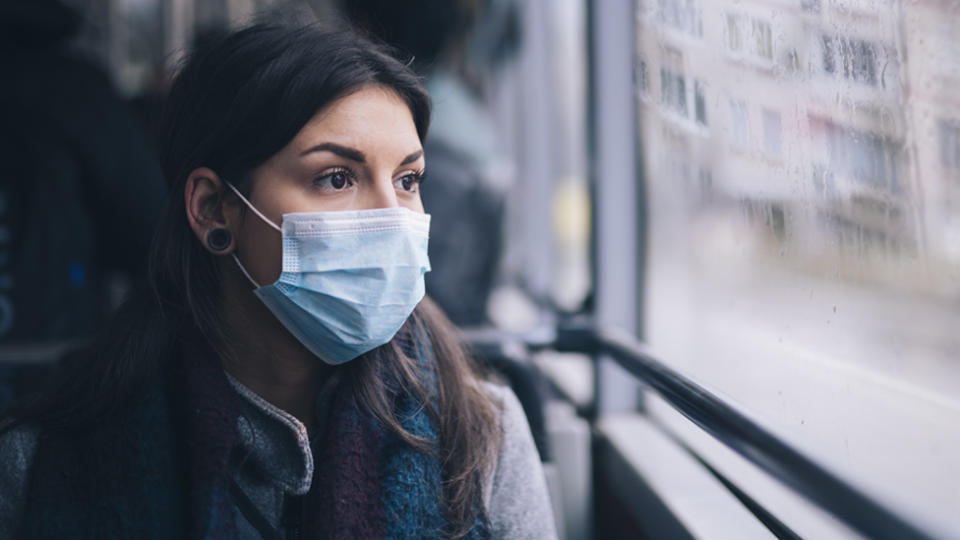Video shows how easily coronavirus spreads on public transport
A video has been released showing how easily coronavirus could spread on public transport if passengers fail to wear a face covering.
As part of the government’s plan to return to a “new normal”, Britons, and many others around the world who cannot work from home, are being encouraged to go back to “the office”.
Boris Johnson has urged people to drive to work if they can, or better still walk or cycle.
This has been criticised, with millions of workers relying on public transport for their daily commute.

The coronavirus mainly spreads via coughs and sneezes, with recent research also suggesting infected droplets may linger in the air after an individual speaks.
People have therefore been urged to cover their face “in enclosed spaces where social distancing is not always possible and they come into contact with others that they do not normally meet”.
Engineers at MSC Software have created a video that shows just how easily the coronavirus could spread on a train, bus or tube.
Early research suggests the infection is mild in four out of five cases, however, it can trigger a respiratory disease called COVID-19.
MSC Software, which develops simulations for Nasa and Airbus, used a technique called computational fluid dynamics to simulate the spread of the coronavirus in a tube filled with unprotected commuters.
Coronavirus: What commuters should do to stay safe on public transport
New reality? Coronavirus rules see apartment residents face 30-minute wait for elevators
Why Australia shouldn't adopt Sweden's controversial coronavirus approach
The same approach is reportedly being used to help Belgian officials understand how the infection spreads in order to assist lockdown exit strategies.
MSC Software concluded those talking without a mask increase the transmission of airborne infected droplets by up to 70 times in just three minutes.
Although the engineers simulated the benefits of a mask, British government officials have actually recommended “face coverings”, which can be homemade.
“It can be as simple as a scarf or bandana that ties behind the head,” states the guidance.
“I think it’s better not to call them masks, because medical masks are what doctors and nurses wear,” Professor Trish Greenhalgh from the University of Oxford previously said.
“A medical mask is scratchy and uncomfortable, and isn’t designed to be kept on all day”.

Officials have long stressed hand washing is among the most effective ways of warding off the infection.
They therefore advise people clean their hands thoroughly before putting a covering on and when taking it off.
Studies have suggested the coronavirus can survive on surfaces.
With the virus entering the body via the eyes, nose or mouth, washing hands thoroughly may prevent commuters unwittingly infecting themselves.
When on the go, a hand sanitiser with at least 70 per cent alcohol is thought to be effective at killing the coronavirus.
Coverings should also be washed “regularly”, in the same load as normal laundry.
“It should be noted the guidelines are very particular regarding the wearing, handling and cleaning of masks and unless they are stringently observed, coverings will quickly become nothing more than a dirty handkerchief strapped to people’s faces,” Dr Simon Clarke from the University of Reading previously said.

For the most part, experts have welcomed the suggestion of face coverings.
“We’d all prefer not to have to wear these but if most people do wear them, we’ll flatten the curve a lot more quickly, reduce pressure on the NHS, and help the economy recover,” Professor Greenhalgh said.
“Remember, cloth face coverings are for source control: my face covering protects you and your face covering protects me.”
Do you have a story tip? Email: newsroomau@yahoonews.com.
You can also follow us on Facebook, Instagram and Twitter and download the Yahoo News app from the App Store or Google Play.





